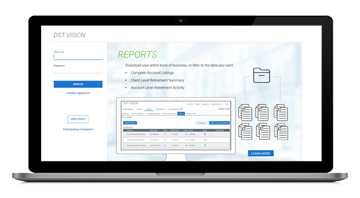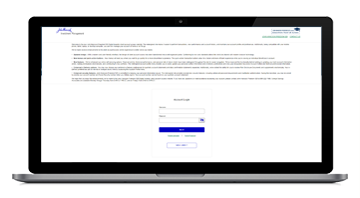Why now for global and international equities: a case for dynamic growth allocation
The global investment landscape might be in the early stages of a powerful shift after more than a decade of U.S. market dominance. International and global equities have begun to outperform notably, suggesting a potential realignment in performance leadership.

In our view, the possibility of a turning point is supported by a robust combination of factors:
1 Broadening leadership across international geographies and capitalizations
2 Renewed earnings momentum in international markets
3 Compelling relative valuations favoring international markets
4 Reduced cross-market correlations
5 Currency dynamics that increasingly support international exposure
For long-term investors, the case for rebalancing toward international and global public equities might be timely and appears strategically sound. Global public markets appear to us to be poised to play an enhanced role in forward-looking portfolio construction, offering investors the opportunity to access a broader and increasingly independent set of return drivers.
1 Turning point in performance leadership
For the first time in over a decade, an international equity benchmark, the MSCI ACWI ex USA Index, has outpaced the S&P 500 Index on both a year-to-date and trailing 12-month basis through June 30, 2025.1 This performance reversal signals a possible inflection point in global equity leadership. International equities have delivered superior recent returns, with the MSCI ACWI ex USA Index outperforming across key periods, including year to date and over the past year. In addition, performance gaps over three- and five-year horizons have narrowed, and emerging markets have begun to regain momentum after a protracted period of underperformance.
Notably, the MSCI ACWI ex USA Small Cap Index outperformed both the S&P 500 Index and the traditional MSCI ACWI ex USA Index over the 12-month period ended June 30.1 This underscores that recent global equity leadership has no longer been narrowly concentrated but rather dispersed across both regions and market capitalizations.
Performance leadership has recently shifted to ex-U.S. equities
Total returns for the 6-month and 1-, 3-, 5-, and 10-year periods ended 6/30/25 (%)
Further supporting the case for a structural shift in global leadership, the MSCI World ex USA Index recently climbed above its prior cyclical highs to levels last seen before the 2008 global financial crisis.1 After nearly 15 years of range-bound behavior, this breakout reflects improving fundamentals across international markets, including rising earnings power, greater multiregional participation in innovation and capital formation, as well as favorable currency and policy dynamics.
Together, these market developments suggest a changing landscape—one in which long-underweighted international exposures may deserve renewed consideration in global portfolios.
Several of the strongest-performing countries through the first half of 2025 include both smaller developed markets such as Ireland, Austria, and Spain, as well as emerging markets, including Greece, Poland, and Colombia.1 This breadth of leadership underscores the value of a global investment lens—one that evaluates opportunities across geographies, asset classes, and stages of economic development.
Even as international market leadership has recently appeared to be broadening, U.S. stock market leadership has been narrowing. The Magnificent Seven stocks that dominated index-level returns in recent years appear to be decoupling, as only a subset of these companies outperformed in the first half of 2025, with others lagging meaningfully. The result is a possibly more fragile source of market leadership within the United States.
Magnificent Seven stock performance was mixed in the first half of 2025
Total returns for the Magnificent Seven stocks, 1/1/25–6/30/25 (%)
2 Renewed international earnings momentum
The earnings growth advantage that U.S. companies have long enjoyed has recently narrowed. Forward-looking earnings expectations for international market indexes, including the MSCI Emerging Markets Index and the MSCI EAFE Index, recently became comparable to—and in some cases stronger than—those for the U.S. market. 1
The next-12-month earnings per share growth trajectories for the MSCI ACWI ex USA Index, the MSCI EAFE Index, and the MSCI Emerging Markets Index have rebounded from postpandemic lows and recently began tracking closely with the MSCI USA Index.1 In our view, this convergence reflects improved macro stability, policy support including monetary easing, and rising operating efficiency, all leading to an upturn in earnings revisions across many international markets.
International earnings growth expectations have closed the gap with the U.S. outlook
Next 12-month earnings per share growth expectations, 5/27/16–5/27/25 (%)
The return of earnings momentum outside the United States reinforces the case that recent outperformance has been driven by improving fundamentals, fueling a valuation re-rating that has started from depressed levels, supporting further potential appreciation. For investors seeking exposure to earnings growth at a discount, the international landscape may offer an increasingly compelling alternative to U.S. markets.
A number of country and regional initiatives are supporting improving growth and returns on capital, including Japan’s third-arrow initiatives, South Korea’s value-up programs, and renewed defense and infrastructure investment in Europe led by Germany, where the debt brake has been removed. These initiatives are contributing to possible recovery in the relative profitability of international companies versus their U.S. competitors. Operating margins in Europe and Japan appear to be stabilizing relative to U.S. averages. In addition, while the trend in other markets such as South Korea is more cyclical, there appears to be an upward bias.
3 Attractive international valuation upside potential
Notwithstanding the recent performance rebound, valuation disparities remain a compelling argument in favor of international markets, in our view. The MSCI ACWI ex USA Index recently traded at a forward price-to-earnings multiple more than 30% below that of the S&P 500 Index, placing the valuation spread in the most attractive decile of the past two decades.
Moreover, the U.S. market’s valuation premium recently reached historically extreme levels. While some gap is justified by differences in sector composition and business mix, we believe that the recent spread reflects a level of investor concentration and optimism regarding U.S. exceptionalism that may prove difficult to sustain.
The depth of this relative valuation gap suggests that even modest shifts in capital flows, sentiment, corporate performance, or macroeconomic assumptions could catalyze meaningful upside for international equities. Recent international valuations also suggest a degree of downside protection that is increasingly scarce in many parts of the U.S. equity market.
The postpandemic valuation gap between U.S. and international stocks has continued to widen
Price-to-earnings ratios for the S&P 500 vs. the MSCI ACWI ex USA Index, 6/1/05–6/1/25
4 Enhanced portfolio diversification
A significant decline in cross-market correlation further strengthens the case for global diversification, in our view. The 12-month rolling correlation between the S&P 500 Index and the MSCI ACWI ex USA Index recently fell to 0.64, well below the 25-year average of 0.83.
In fact, correlations between U.S. and international equity returns were recently well below the average levels of recent decades. Lower correlation expands the potential diversification benefits of international allocations, offering investors more effective risk mitigation at the total portfolio level. Therefore, added global exposure may contribute meaningfully to overall portfolio risk management and diversification.
U.S. vs. ex-U.S. correlations have recently fallen below the historical average
Rolling 1-year correlations between the S&P 500 Index and the MSCI ACWI ex USA Index, 12/31/01–6/30/25
5 Currency tailwinds favor international markets
The U.S. dollar has recently retreated from historically elevated levels, a development that has typically coincided with periods of relative outperformance by international equities. The dollar recently declined from levels more than one standard deviation above its 20-year average, suggesting the potential for further mean reversion.
The U.S. dollar has retreated in 2025 from historically elevated levels
U.S. Dollar Index (DXY) performance, 12/31/05–6/30/25
As one would expect, there’s a notable, persistent relationship between dollar weakness and outperformance by international markets. The U.S. dollar’s monthly changes have maintained a consistent inverse relationship with the relative performance of international equities versus the S&P 500, with a correlation of -0.52 and an R-squared of 0.27.1
Over the longer term, structural forces might also be at play. The U.S. dollar’s share of global foreign exchange reserves has declined from 72% to 58% over the past 25 years, reflecting a gradual but persistent diversification away from dollar dominance by foreign central banks.
The U.S. dollar's dominance has diminished since 2000
The U.S. dollar's share of foreign exchange currency reserves, 3/31/00–12/31/24 (%)
This ongoing shift in currency exchange reserves may accelerate, given growing imbalances in the U.S. fiscal position. Total U.S. public debt has reached unprecedented levels, fueled by aggressive fiscal stimulus. The recent passage of President Trump’s One Big Beautiful Bill Act underscores the continuation of expansionary fiscal policy, potentially further straining the U.S. national balance sheet and possibly reducing long-term confidence in the dollar.
U.S. public debt has surged over the past 30 years
U.S. total federal public debt outstanding, trillions of dollars, 1/31/95–5/31/25
Finally, overall global sentiment toward the United States has recently deteriorated, according to international surveys that show a broad decline in U.S. favorability across both developed- and emerging-market countries. While sentiment data can be volatile, it may signal longer-term geopolitical headwinds and a diminished appetite for unhedged dollar exposure, in our view.
According to data from the U.S. Federal Reserve, demand for U.S. equities has been a key driver of demand for the U.S. dollar, perhaps even exceeding foreign reserve flows. U.S. equities as a percentage of global market capitalizations may have peaked in February 2025, suggesting that portfolio flows could also become a headwind to the dollar. Note that investors who benchmark based on market capitalizations will have a historically elevated U.S. market exposure, reinforcing the merit of reexamining international and global equity allocations.
Has U.S. equity market capitalization dominance peaked?
U.S. equity market share of global market capitalization, 12/31/05–7/31/25
Conclusion: a timely opportunity to reexamine global equity allocations
In sum, these structural and cyclical factors suggest to us that currency dynamics could increasingly favor outperformance by international and global markets. A confluence of notable developments—recovering international equity performance, historically attractive valuations, renewed earnings momentum, declining correlations, a supportive macro backdrop, and currency tailwinds—constitute a sound basis for potentially increasing international and global equity exposure, in our view.
In a world shaped by accelerating technological innovation, fiscal headwinds, and geopolitical realignment, we believe that dynamic growth investors should look beyond U.S. borders to access the full spectrum of opportunity. Global public markets offer liquidity, valuation transparency, and immediate access to world-leading innovation.
For investors seeking to efficiently compound capital and manage risk, the rationale for rebalancing toward international and global public equities appears strong. As stewards of client capital, we remain committed to a disciplined, fact-based process for identifying companies benefiting from wide and expanding moats, positioned for durable and accelerating growth, and fueling strong outcomes in an increasingly opportunity-rich global landscape.
1 FactSet, as of 6/30/25.
Important disclosures
Important disclosures
The views presented are those of the author(s) and are subject to change. No forecasts are guaranteed. This commentary is provided for informational purposes only and is not an endorsement of any security, mutual fund, sector, or index. Any economic or market performance is historical and is not indicative of future results.
The S&P 500 Index tracks the performance of 500 of the largest companies in the United States. The MSCI All Country World Index (ACWI) ex USA Index tracks the performance of large- and mid-cap stocks of developed- and emerging-market countries, excluding the United States. The MSCI Europe, Australasia, and Far East (EAFE) Index tracks the performance of large- and mid-cap stocks of companies in those regions. The MSCI Emerging Markets (EM) Index tracks the performance of large- and mid-cap EM stocks. The MSCI ACWI ex USA Small Cap Index tracks the performance of small-cap stocks of developed- and emerging-market countries, excluding the United States. It is not possible to invest directly in an index. Correlation is a statistical measure that describes how investments move in relation to each other, which ranges from –1.0 to 1.0. The closer the number is to 1.0 or –1.0, the more closely the two investments are related.
Price to earnings (P/E) is a valuation measure comparing the ratio of a stock’s price with its earnings per share. Correlation is a statistical measure that describes how investments move in relation to each other, which ranges from –1.0 to 1.0. The closer the number is to 1.0 or –1.0, the more closely the two investments are related. Standard deviation is a statistical measure of the historic volatility of a portfolio. It measures the fluctuation of a fund’s periodic returns from the mean or average. The larger the deviation, the larger the standard deviation and the higher the risk. R-squared is a measurement that indicates how closely a fund's performance correlates with the performance of its benchmark index. R-squared can range from 0.00 to 1.00, with 1.00 indicating perfect correlation to the index. Market capitalization is the value of a corporation determined by the market price of its issued and outstanding common stock.
Diversification does not guarantee a profit or eliminate the risk of a loss.
Foreign investing, especially in emerging markets, has additional risks, such as currency and market volatility and political and social instability. Growth stocks may be more susceptible to earnings disappointments. Stock prices can be volatile and are affected by both general economic conditions and the financial prospects of individual companies. Large company stocks could fall out of favor, and the stock prices of small and midsize companies may be more volatile and less liquid than those of large companies. Please see the fund’s prospectus for additional risk.
Investing involves risks, including the potential loss of principal. Financial arkets are volatile and can fluctuate significantly in response to company, industry, political, regulatory, market, or economic developments. The information provided does not take into account the suitability, investment objectives, financial situation, or particular needs of any specific person.
MF4499422








